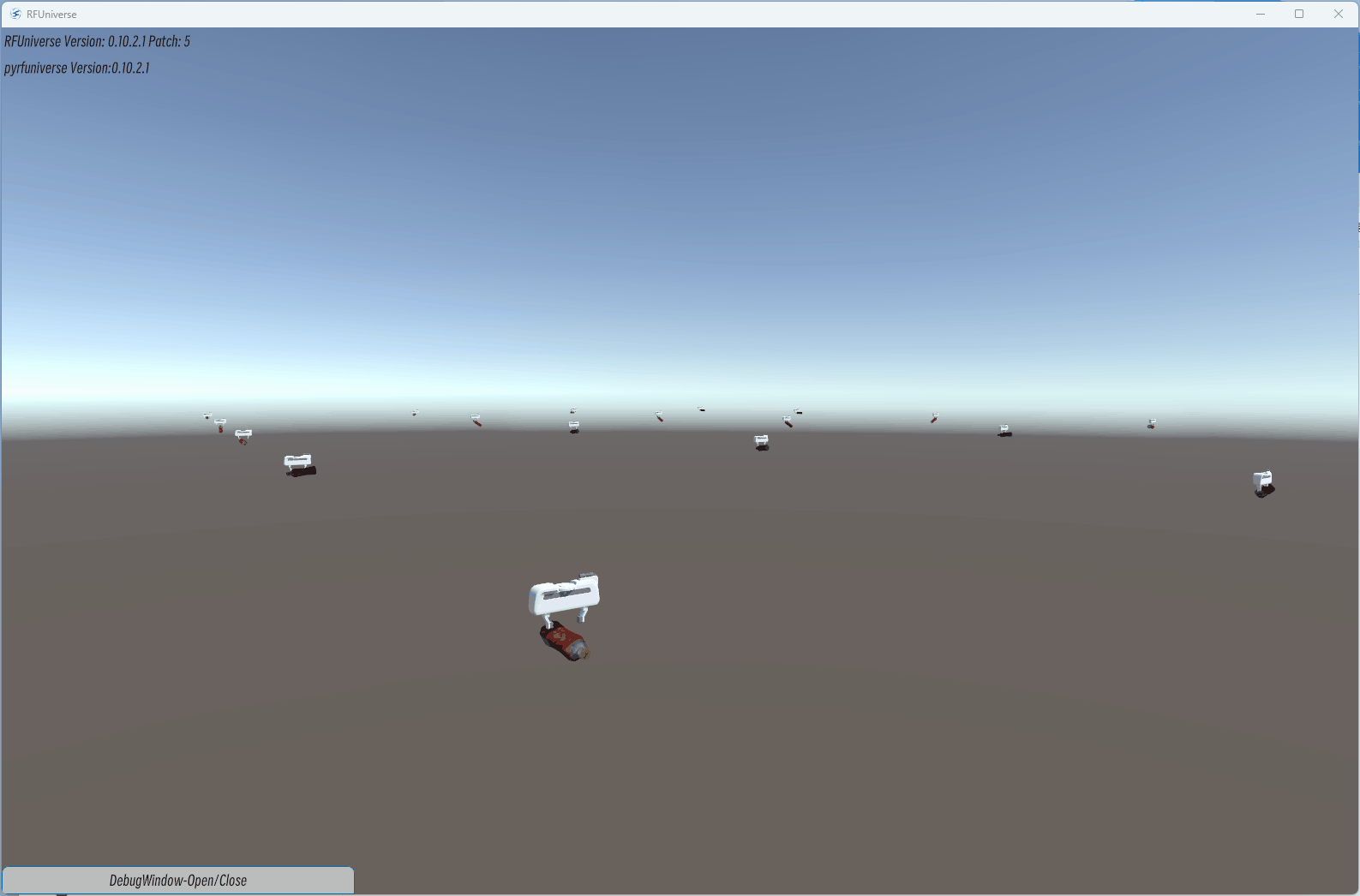test_grasp_sim
1 Basic Functionality

Demonstrates the Franka two-finger gripper grasp test
Basic idea: Randomly initialize the position of the object. If there is penetration between the object and the gripper, do not grasp; if the object’s generated position is reasonable, the gripper will grasp normally. Since penetration occurs most of the time, a large number of grippers and objects are initialized in the scene at once for parallel synchronous testing.
2 Implementation Process
2.1 Data Preprocessing
mesh_path = "../Mesh/drink1/drink1.obj"
points, normals = get_grasp_pose(mesh_path, 100)
points = points.reshape(-1).tolist()
normals = normals.reshape(-1).tolist()
Import the required mesh and pose data and preprocess it
2.2 Initialize the Environment
env = RFUniverseBaseEnv(assets=["GraspSim"], ext_attr=[GraspSimAttr])
2.3 Demonstrate the Franka Two-Finger Gripper Grasp Test
grasp_sim = env.InstanceObject(id=123123, name="GraspSim", attr_type=GraspSimAttr)
grasp_sim.StartGraspSim(
mesh=os.path.abspath(mesh_path),
gripper="franka_hand",
points=points,
normals=normals,
depth_range_min=-0.05,
depth_range_max=0,
depth_lerp_count=5,
angle_lerp_count=5,
parallel_count=100,
)
env.step()
while not grasp_sim.data['done']:
env.step()
Call
StartGraspSimto start the gripper test and wait for the test to complete
points = grasp_sim.data["points"]
points = np.array(points).reshape([-1, 3])
quaternions = grasp_sim.data["quaternions"]
quaternions = np.array(quaternions).reshape([-1, 4])
width = grasp_sim.data["width"]
width = np.array(width).reshape([-1, 1])
env.close()
data = np.concatenate((points, quaternions, width), axis=1)
csv = pd.DataFrame(data, columns=["x", "y", "z", "qx", "qy", "qz", "qw", "width"])
csv_path = os.path.join(os.path.dirname(mesh_path), "grasps_rfu.csv")
csv.to_csv(csv_path, index=True, header=True)
env.Pend()
env.close()
Record the test results and save